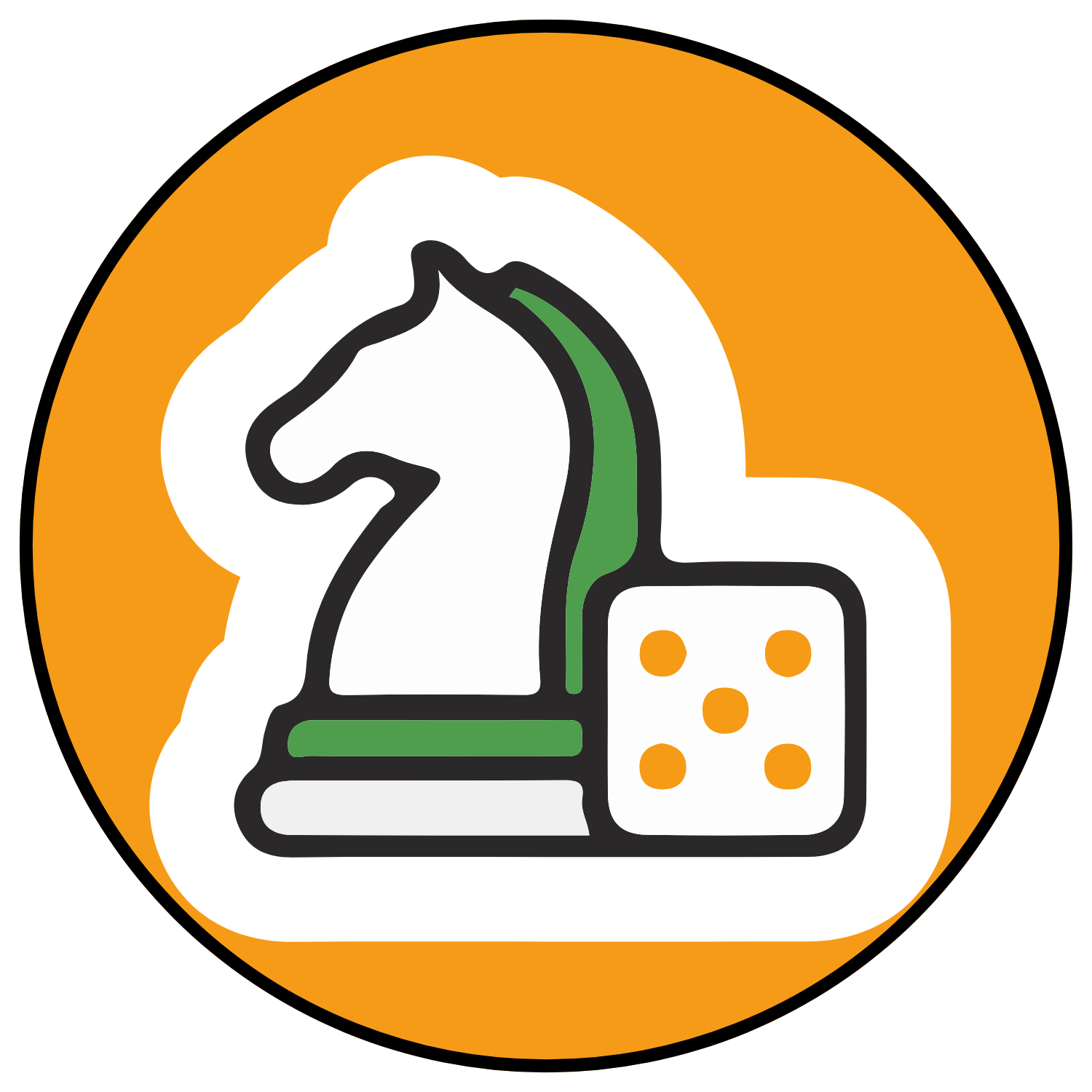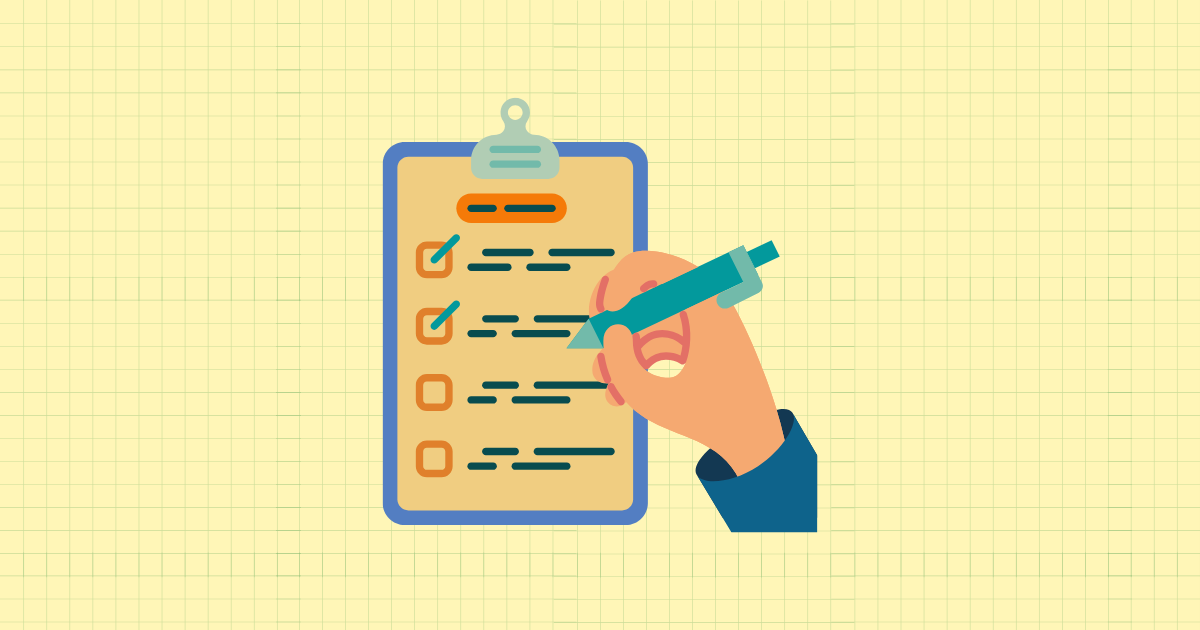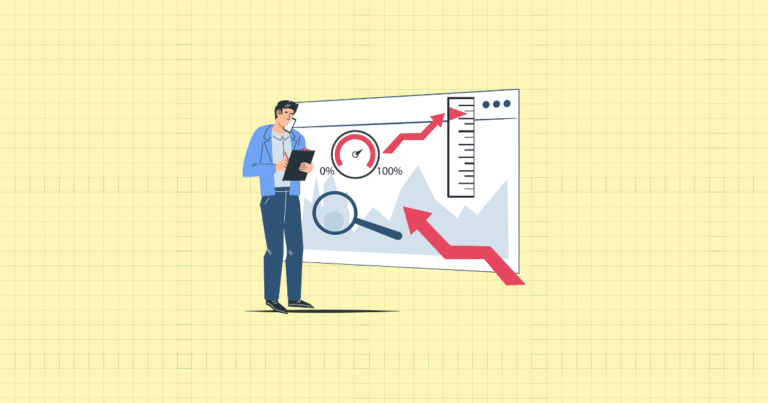Picture this: A customer spends twenty minutes browsing your Shopify store, carefully selects three items, adds them to their cart, and then… vanishes. Gone. No purchase, no explanation, just an empty feeling in your analytics dashboard where a sale should have been.
This scenario plays out millions of times every day across e-commerce stores worldwide. It’s called cart abandonment, and if you’re a Shopify store owner, it’s costing you more money than you might realize.
But here’s the thing—cart abandonment isn’t just a problem. It’s an opportunity. When you understand the benchmarks, identify where your store stands, and implement the right strategies, those abandoned carts transform into recovered revenue. In this guide, you’ll discover exactly how your Shopify store compares to industry standards and learn proven tactics to turn abandonment into sales.
Why Cart Abandonment Matters for Every Shopify Store Owner
Cart abandonment happens when shoppers add products to their cart but leave your store without completing the purchase. Simple enough, right? But the impact on your business is anything but simple.
In 2025, the global average cart abandonment rate sits at a staggering 70.19%. That means seven out of every ten people who show enough interest to add items to their cart will walk away without buying. For Shopify store owners, this translates to billions of dollars in lost revenue annually—money that was within reach but slipped away at the crucial moment.
Think about your own store for a moment. Every abandoned cart represents more than just a lost sale. It represents wasted advertising spend, squandered customer acquisition efforts, and missed opportunities to build lasting relationships with potential customers. When someone abandons a cart, your Facebook ads, Google campaigns, and SEO efforts that brought them to your store yield zero return on investment.
The financial impact hits differently depending on your store’s profile. If you’re running a luxury or high-ticket Shopify store, each abandoned cart might represent hundreds or even thousands of dollars in lost revenue. But even lower-priced items add up quickly when abandonment rates climb.
Here’s what makes this challenge particularly relevant for Shopify store owners: the platform’s built-in analytics make it impossible to ignore your abandonment rates. Unlike the early days of e-commerce when tracking was murky, Shopify puts these numbers front and center in your dashboard. You can see exactly how many potential customers walked away, when they left, and what they were planning to buy.
Current Cart Abandonment Benchmarks and What They Mean
Let’s talk numbers. The latest research across 49 industry studies reveals that the average cart abandonment rate in 2025 hovers around 70.19%. But averages only tell part of the story.
The range typically falls between 69% and 75% across different markets and devices, but device type makes a significant difference in these numbers. Desktop users abandon carts at approximately 73%, tablet users at 81%, and mobile users lead the pack at 86%. Why does mobile abandonment run so high? Poor user experience, slower loading times, and complicated checkout processes that don’t translate well to smaller screens.
These aren’t just abstract statistics. They represent real financial impact. Researchers estimate that over $260 billion in recoverable annual orders could be captured through improved checkout experiences in the US and EU markets alone. Globally, businesses lose approximately $18 billion in sales each year due to cart abandonment.
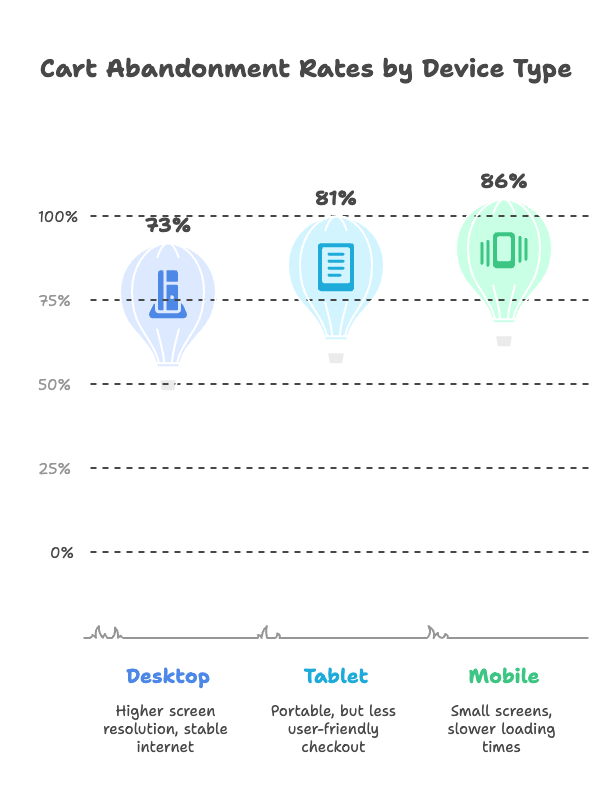
The Main Culprits Behind Abandoned Carts
Understanding why customers abandon carts gives you the power to address these issues directly. The most common reasons paint a clear picture:
Unexpected additional costs top the list, causing 48% of cart abandonment. When customers see shipping fees, taxes, or handling charges appear suddenly at checkout, many decide the purchase isn’t worth the total price. This surprise factor breaks trust and kills conversions.
Required account creation drives away 24-26% of potential buyers. Many customers want to make a quick purchase without committing to another account, especially for first-time purchases from unfamiliar brands.
Security and payment concerns account for 13-25% of abandonment. If customers doubt the security of their credit card information or don’t see their preferred payment method, they’ll leave rather than risk their financial data.
Slow or complicated checkout processes frustrate 22% of customers into abandoning their carts. Every additional step, form field, or page in your checkout process increases the likelihood that customers will give up.
Poor mobile experience and technical issues round out the major causes. When sites load slowly, customers are 75% more likely to abandon their purchase. Technical errors during checkout account for another 17% of abandonment cases.
How to Track Cart Abandonment in Your Shopify Store
Measuring cart abandonment on Shopify starts with understanding the basic formula: (Abandoned Carts ÷ Carts Created) × 100. This simple calculation reveals your abandonment rate, but the real insight comes from digging deeper into the data.
Shopify’s built-in analytics automatically track and calculate your abandonment rates, but you can enhance this tracking significantly with specialized apps. Growth Suite and similar tools provide detailed insights into product-level, campaign-specific, and segment-based abandonment patterns that help you identify exactly where customers drop off.
The key to actionable insights lies in segmentation. Don’t just look at your overall abandonment rate—break it down by device type, traffic source, and customer type. New visitors might abandon at different rates than returning customers. Traffic from social media might behave differently than traffic from Google searches. Understanding these patterns helps you target your improvement efforts where they’ll have the biggest impact.
Reading Your Numbers Against Industry Benchmarks
Once you have your abandonment rate, compare it against the 70% benchmark. If you’re significantly above this number, you have substantial room for improvement. If you’re below it, you’re performing better than average, but there’s still money left on the table.
Remember that industry-specific benchmarks can vary. Luxury goods might see higher abandonment rates due to longer consideration periods, while consumable products might see lower rates due to impulse purchasing behavior. Use Shopify’s analytics and specialized apps to benchmark against stores in your specific category when possible.
Proven Strategies to Reduce Cart Abandonment
Now comes the exciting part—turning those insights into action. Reducing cart abandonment requires a multi-faceted approach that addresses the main causes we identified earlier.
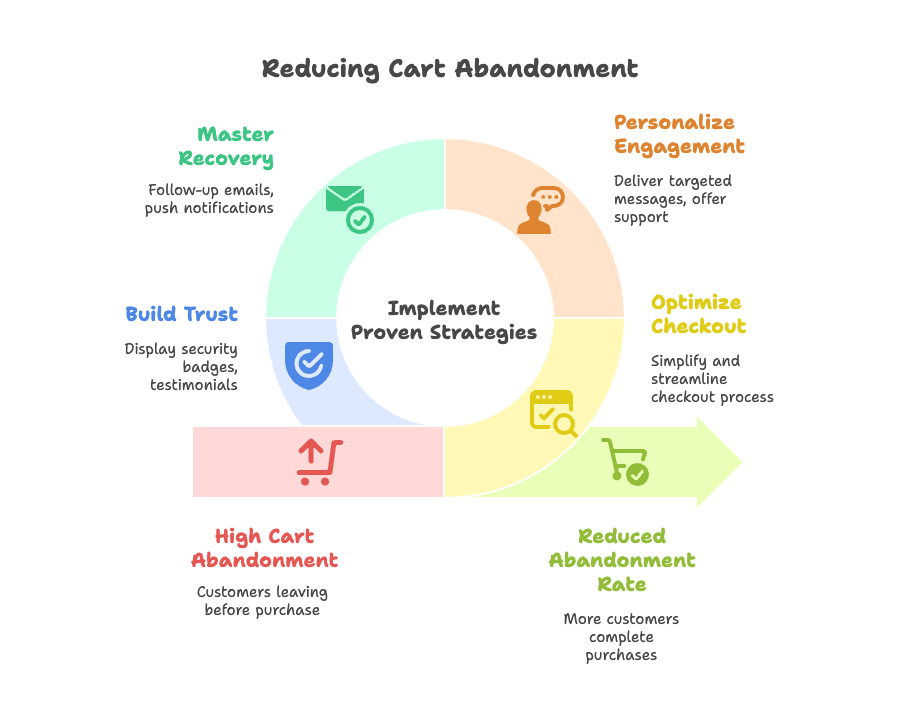
Optimize Your Checkout Experience
Start with the foundation: your checkout flow. Every unnecessary step is a potential exit point. Enable guest checkout to eliminate the account creation barrier. Minimize form fields to only the essentials. Add progress bars so customers know how much of the process remains.
Consider activating Shop Pay if you haven’t already. This one-click checkout solution dramatically reduces friction for returning customers and can significantly impact your abandonment rates. The easier you make it to complete a purchase, the more purchases you’ll complete.
Transparency builds trust, especially around pricing. Display shipping costs early in the shopping process, ideally on product pages or immediately when items are added to the cart. Offer shipping calculators so customers can estimate total costs before reaching checkout. When customers know what to expect, they’re less likely to abandon due to surprise fees.
Leverage Personalization and Real-Time Engagement
Modern Shopify apps enable sophisticated behavioral segmentation that helps you deliver the right message to the right customer at the right time. High-intent visitors who have browsed multiple products might respond to different offers than casual browsers who just arrived at your store.
Live chat integration can be particularly powerful for reducing abandonment. When customers have questions or concerns during the shopping process, immediate support can address their hesitations and keep them moving toward purchase. Shopify Inbox integrates chat across multiple channels, and research shows that approximately 70% of chat interactions result in completed purchases.
Exit-intent popups capture customers at the moment of abandonment and offer one last chance to convert. These work particularly well when combined with time-limited discount offers. Animated countdown timers create urgency, while unique discount codes ensure offers feel exclusive rather than generic.
Master Post-Abandonment Recovery
Not every abandoned cart can be prevented, but many can be recovered through strategic follow-up. Email remains the most effective recovery channel. The best practice involves a three-email sequence: send the first email one hour after abandonment, the second after one day, and the third after three days.
Personalize these emails with images of the abandoned items and consider including incentives for hesitant customers. But avoid offering discounts in every recovery email—you don’t want to train customers to abandon carts just to receive offers.
Push notifications and SMS reminders offer less intrusive alternatives to email with typically higher open rates. The Shop app supports in-app and push notifications that can gently remind customers about their pending purchases without feeling overwhelming.
Retargeting through paid ads allows you to re-engage high-intent abandoners across social media and search platforms. Use Shopify Audiences to create custom segments of users who abandoned high-value carts, then target them with specific ads featuring the products they considered.
Build Trust and Reduce Friction
Trust signals throughout your store and checkout process can significantly impact abandonment rates. Display security badges and trusted payment logos prominently on your payment pages. Show clear, visible return policies—research indicates that customer-friendly return information can reduce abandonment by up to 28%.
Social proof elements like customer testimonials and product ratings help overcome purchase hesitation. When potential customers see that others have had positive experiences with your products and store, they’re more likely to complete their own purchases.
Tailored Approaches for Different Store Levels
Your cart abandonment strategy should align with your store’s maturity and complexity. What works for a startup might be overkill for beginners, while advanced stores need sophisticated tactics that would overwhelm newcomers.
Starter and Beginner Stores
If you’re just launching or have recently launched your Shopify store, focus on the fundamentals. Ensure your checkout flow is clear and simple. Set up basic abandoned cart email recovery using Shopify’s built-in tools before investing in advanced apps. Prioritize transparent pricing and mobile optimization—these foundational elements will give you the biggest impact for your effort.
Intermediate Stores
As your store gains traction, you can implement more sophisticated strategies. Start segmenting your abandonment data by user type, device, and traffic source. Experiment with A/B testing different checkout flows and recovery email sequences. This is when tools like Growth Suite become valuable for deeper cart insights and behavioral analysis.
Consider adding live chat functionality and testing exit-intent popups with time-limited offers. These intermediate tactics can provide significant improvements when implemented thoughtfully.
Advanced and High-Performing Stores
Established stores with consistent traffic and sales can leverage the most sophisticated abandonment reduction strategies. Implement AI-driven intent prediction to identify high-value abandoners before they leave. Create personalized cart recovery workflows that adapt based on customer behavior patterns and purchase history.
Focus on increasing order values from recovered carts through strategic bundling and post-purchase upsell opportunities. Advanced stores often see better results from optimizing cart value rather than just cart recovery rates.
Real-World Success Stories
Theory becomes powerful when you see it working in practice. Consider a luxury Shopify brand that reduced their abandonment rate from 78% to 61% by implementing VIP chat support, transparent delivery information, and a refined checkout process. The key was recognizing that luxury customers expected white-glove service throughout the entire purchase journey, not just after buying.
Another success story comes from Growth Suite users—over 300 Shopify stores have reduced their abandonment rates and improved return on ad spend using behavioral targeting and personalized offers. These stores discovered that not all abandoners are the same, and treating them differently based on their behavior patterns yields much better results than generic recovery attempts.
Essential Apps for Cart Recovery
The Shopify app ecosystem offers numerous solutions for cart abandonment. For email recovery, consider apps like Cartly, Omnisend, or Klaviyo, each offering different features and price points. For comprehensive conversion rate optimization, tools like Growth Suite, Privy, and Shopify Inbox provide various approaches to engagement and recovery.
When choosing apps, prioritize those that integrate seamlessly with your existing stack and provide clear analytics on their impact. The best app is the one you’ll actually use consistently.
Your Action Plan for Reducing Cart Abandonment
Knowledge without action remains just information. Here’s how to transform these insights into results for your Shopify store.
Start by monitoring and benchmarking your current abandonment rate. Use Shopify’s analytics to establish your baseline, then track changes as you implement improvements. Aim to get below the 70% industry benchmark for your category, but remember that even small improvements translate to significant revenue gains.
Prioritize checkout simplicity and transparency. Review your checkout flow from a customer’s perspective. Can a first-time visitor complete a purchase in under four minutes? Are all costs visible early in the process? These foundational elements often provide the biggest immediate impact.
Implement a basic abandoned cart email recovery system if you haven’t already. Shopify’s built-in functionality provides a solid starting point that you can enhance with specialized apps as your needs grow.
Your Implementation Checklist
Enable abandoned cart emails in your Shopify admin settings. This basic step alone can recover 10-15% of abandoned carts with minimal effort. Test your checkout flow on multiple devices, paying special attention to mobile experience since mobile users abandon at the highest rates.
Install and experiment with cart recovery apps that align with your store’s complexity level. Start with one tool, measure its impact, then consider adding others based on your results.
Set realistic recovery goals based on your current performance and industry benchmarks. Track your progress monthly and adjust your strategies based on what the data reveals about your customers’ behavior.
Cart abandonment will always be part of e-commerce, but it doesn’t have to drain your profits. By understanding benchmarks, implementing proven strategies, and continuously optimizing based on your store’s unique patterns, you can transform those abandoned carts from lost revenue into recovered sales. The customers are already interested—now it’s time to help them complete their journey to purchase.
References
- Shopify Blog. “Best Cart Abandonment Software for Ecommerce in 2025.” April 9, 2025. https://www.shopify.com/blog/cart-abandonment-software
- Growth Suite. “Achievements – Over 300 Shopify stores reduced abandoned cart rates.” July 17, 2025. https://growth-suite.com
- Growth Suite. “Actionable Analytics and Reports: Make Data-Driven Decisions.” Aug 13, 2025. https://www.growthsuite.net/product/actionable-analytics-and-reports-make-data-driven-decisions-for-growth
- Shopify. “How to Reduce Shopping Cart Abandonment.” Feb 18, 2025. https://www.shopify.com/enterprise/blog/44272899-how-to-reduce-shopping-cart-abandonment-by-optimizing-the-checkout
- Baymard Institute. “Ecommerce Checkout Usability – Research & Benchmarking.” https://baymard.com/lists/cart-abandonment-rate
- Shopify Help Center. “Abandoned Checkouts Email Setup.” Dec 5, 2023. https://www.mageplaza.com/insights/how-to-set-up-an-abandoned-cart-email-in-shopify.html
Ready to supercharge your Shopify store’s sales by turning abandoned carts into completed purchases? Growth Suite is a Shopify app that helps you do exactly that through intelligent behavioral tracking, personalized time-limited offers, and comprehensive cart analytics. Install it with a single click and start recovering lost revenue today!
